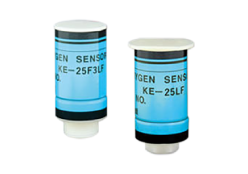Technical article: Overview of lead-free galvanic cell-type oxygen sensors (O2 sensors)
| Technological innovations in galvanic cell-type oxygen sensors | ||
| Environmentally friendly oxygen sensors without using lead∗1 |
Issues with leaded oxygen sensors
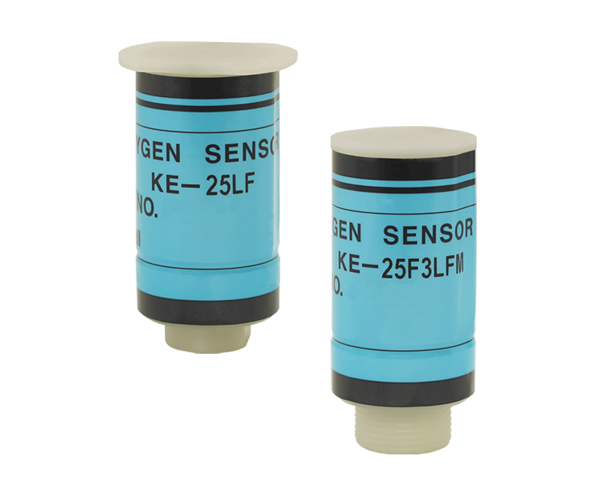
Lead-free galvanic cell-type oxygen sensors KE-LF series
Maxell's galvanic cell-type oxygen sensors are small, lightweight, and operates at room temperature, making it easy to measure oxygen concentration. These sensors are not only used for prevention of oxygen deficiency but also in various fields such as medical, exhaust gas measurement, biotechnology equipment, food storage, and education.
Generally, metallic lead is used in the electrode (anode) of oxygen sensors. However, lead is a toxic substance, posing risks of soil pollution, marine pollution, and harmful impacts on human health.
Lead is naturally present in the environment, and we ingest small amounts through food. However, industrial activities release lead into the soil, air, and water, where it accumulates, contaminating ecosystems and entering our bodies, potentially affecting our health. Hence, it is essential to minimize lead emissions into the environment. For these reasons, lead use in household appliances and children's toys is regulated, and lead-free compliance (not using lead in products) is advancing worldwide. Thus, lead-free compliance is an important issue in modern society.
Lead-free technology is a significant challenge for galvanic cell-type oxygen sensors, and it has been difficult to develop a reliable alternative to leaded oxygen sensors. As of July 2024, leaded galvanic cell-type oxygen sensors are exempt from the European RoHS directive∗2, allowing their continued use globally.
- Without using lead, lead-free: Lead content is less than or equal to 0.1wt% in each of parts (in a homogeneous material) comprising a product.
- European RoHS directive:An EU directive on the restriction of the use of certain hazardous substances in electrical and electronic equipment (2011/65/EU, EU2015/863).
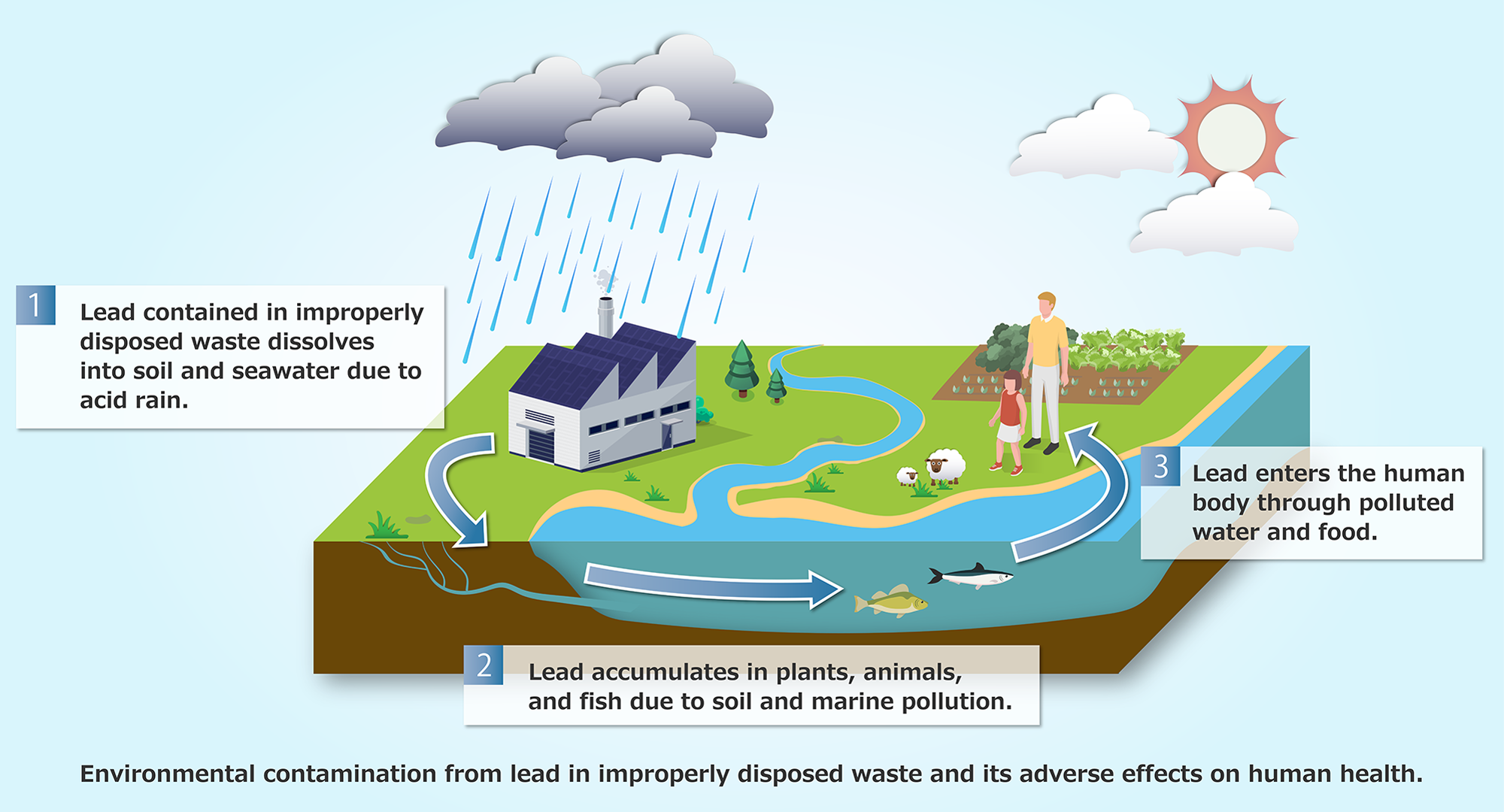
Environmental contamination from lead in improperly disposed waste and its adverse effects on human health.
Transition to lead-free oxygen sensors
Looking ahead, Maxell set the development of environmentally friendly, lead-free∗1 galvanic cell-type oxygen sensors as a research goal. After more than ten years of foundational research, in November 2019, Maxell successfully developed and commercialized the KE-25LF and KE-25F3LF lead-free oxygen sensors without using lead in the anode.
Achieving comparable performance to conventional oxygen sensors without using lead required not only selecting alternative anode materials but also fundamentally revising the primary materials constituting the sensor, including the cathode and electrolyte, to create a new battery configuration. By adopting a precious metal cathode, a tin alloy anode, and a weak acid electrolyte (pH 4-5) primarily composed of citric acid originally developed by Maxell , the electrochemical reactions at both cathode and anode were effectively facilitated. Consequently, the lead-free oxygen sensors achieved the same level of performance as conventional products without using lead. (For detailed characteristics, please refer to "Lead-Free Oxygen Sensors (O2 Sensors)" on our webpage: https://biz.maxell.com/en/tokki/oxygen_sensors.html
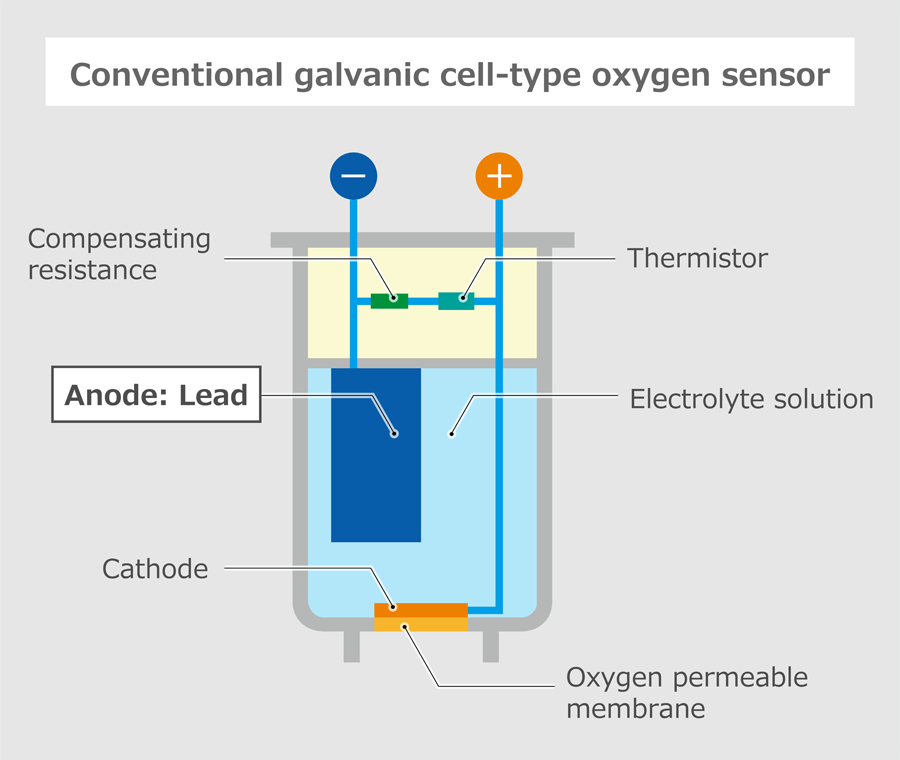
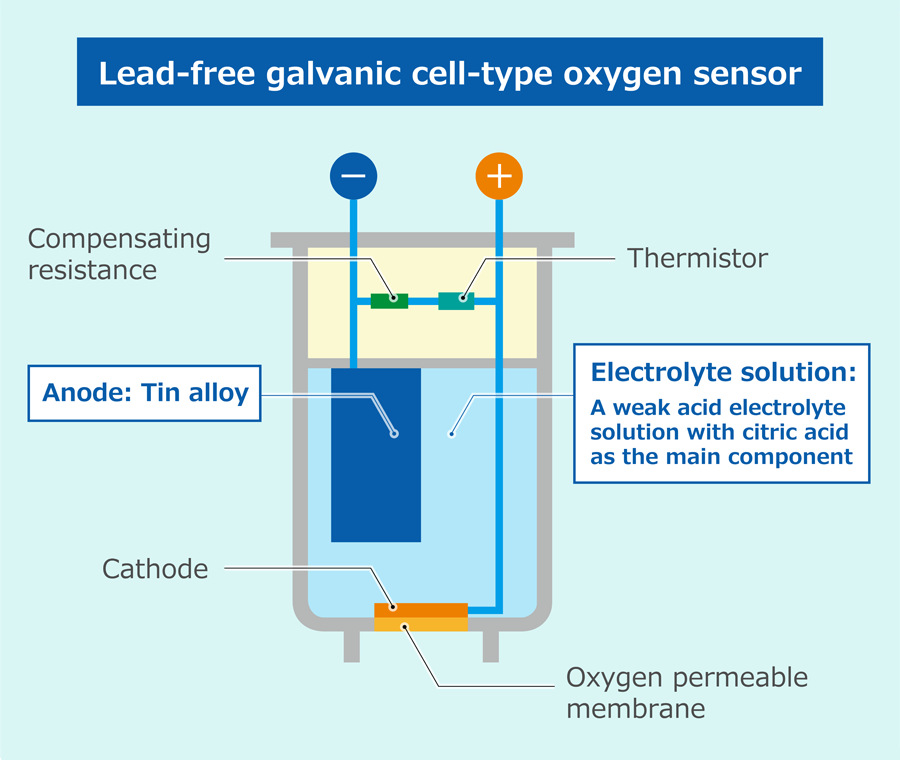
The structure of conventional (leaded) and lead-free galvanic oxygen sensors
The sensor's membrane is bonded to the cathode. Oxygen slightly permeating through the membrane is fully reduced on the cathode. The resulting current generated between the cathode and anode is converted into voltage by the built-in compensating resistance within the sensor.
Environmental regulations surrounding oxygen sensors (European RoHS Directive) and Maxell's efforts
Maxell has added multiple models to its product range in a few years since the development of the lead-free galvanic cell-type oxygen sensor KE-LF series in 2019. With a full range of alternatives to oxygen sensors that use lead, and after confirming that the lead-free oxygen sensors can be used without any issues in mass-produced equipment, we swiftly made the decision to transition to selling only lead-free oxygen sensors. Consequently, we have announced externally that we will cease sales of our main product, the lead-based oxygen sensors, in March 2025.
In this context, an evaluation report regarding the exemption of oxygen sensors from the European RoHS directive was issued in May 2024. The report highlighted Maxell's technology as an effective alternative to leaded galvanic cell-type oxygen sensors.
The evaluation report stated:
- "In the consultants' view, it can be concluded that lead-free permeable membrane sensors are technically practicable, as has been demonstrated by market-available products." (p.426)
- "The consultants do not consider it necessary to renew the exemption for permeable membrane oxygen sensors for the maximum validity period. A shorter validity period would signal to the industry at large that the transition to lead-free is becoming both increasingly feasible and urgent." (p.429)
Reference: Final Report, Study to assess requests for 29 renewal requests concerning one specific EEE category and two (-2-) new exemption requests under the Directive 2011/65/EU, May 2024 https://www.rohs.biois.eu/RoHS-Pack-27_Report_Final.pdf
When the exemption under the European RoHS directive is lifted based on this evaluation report, the adoption of lead-free oxygen sensors is expected to accelerate worldwide.
The future brought by the spread of lead-free oxygen sensors
Maxell's lead-free galvanic cell-type oxygen sensors are environmentally friendly products, free from lead and other substances restricted under the RoHS directive (mercury, cadmium, hexavalent chromium, PBBs, PBDEs) and four phthalates (DEHP, DBP, BBP, DIBP).∗3
The widespread use of devices equipped with lead-free oxygen sensors is expected to reduce the impact of soil and water pollution on ecosystems. Through the manufacturing and sales of lead-free galvanic cell-type oxygen sensors, Maxell contributes to reducing environmental impact and health risks.
∗3 Maxell's lead-free oxygen sensors are fully compliant with the European RoHS Directive 2011/65/EU and 2015/863/EU, ensuring that they meet the restricted substance limits specified by these directives.
• This information is current as of July 2024.
News releases and notice
Jun. 21, 2023 Notice Discontinuation of KE series leaded galvanic cell-type oxygen sensors
Apr. 13, 2021 News Maxell develops lead-free galvanic cell-type oxygen sensors suitable for medical use, enabling measurement at high oxygen concentration
Jan. 20, 2021 News Maxell started shipment of world's first environmentally friendly lead-free galvanic cell-type oxygen sensors with weak acid electrolyte solution
Nov. 28, 2019 News Maxell introduces Japan's first lead-free galvanic cell-type oxygen sensors with originally developed weak acid electrolyte, now available for orders (Japanese only)
Related products
Inquiry form related to lead-free oxygen sensors
We look forward to hearing from you regarding selection of oxygen sensors, sample consultations, etc. Please feel free to contact Maxell.

